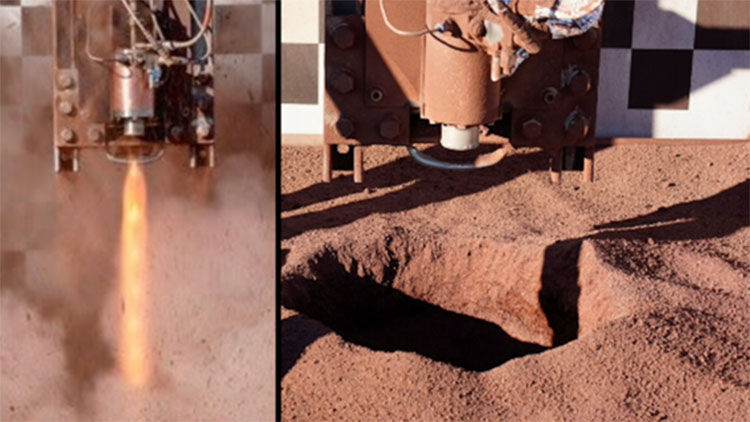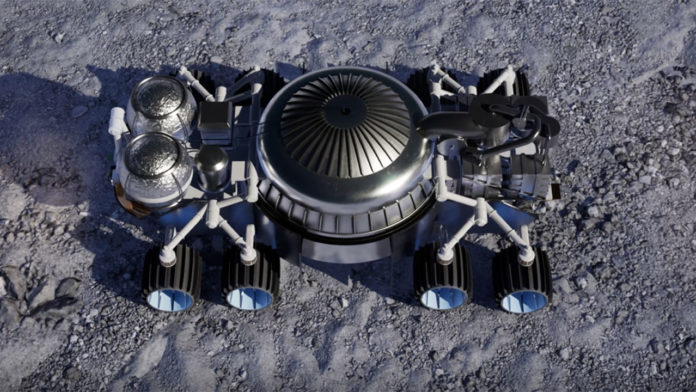The American company Masten Space Systems has presented a plan for the extraction of ice on the Moon within the framework of NASA’s Break the Ice Challenge. The company has developed a Rocket Mining System called ROCKET M (Resource Ore Concentrator using Kinetic Energy Targeted Mining) that uses an enclosed rocket engine and vacuum system to harvest water ice from the lunar surface.
Designed in collaboration with Honeybee Robotics and Lunar Outpost, the new Rocket Minning System can rapidly extract frozen volatiles from the Moon. This method disrupts lunar soil with a series of rocket plumes that fluidize ice regolith by exposing it to direct convective heating.
The system utilizes a 100 lbf rocket engine under a pressurized dome to enable deep cratering more than 2 meters below the lunar surface. During this process, ejecta from multiple rocket firings blasts up into the dome and gets funneled through a vacuum-like system that separates ice particles from the remaining dust and transports it into storage containers.

The small, low-mass system, including the rocket fuel, engine, collapsible dome, and storage containers, can be attached to a rover and delivered to the Moon on Masten’s lunar landers. After landing, the eight-wheeled rover will exit the lander and travel to the mining area.
After that, the device will activate the engine with pulses of half a second, during which the lunar soil will rise into the air. The system is projected to mine up to 12 craters per day and produce 100 kg of ice per crater. That would allow us to recover more than 420,000 kg of lunar water per year!
The rocket mining approach would allow the team to access frozen volatiles around boulders, breccia, basalt, and other obstacles. According to its developers, the system is scalable and cost-effective. It doesn’t require heavy machinery or ongoing maintenance. The stored water can be electrolyzed into oxygen and hydrogen, utilizing solar energy to continue powering the rocket engine for more than five years of water excavation.
It makes sense to mine water ice in the South Pole of the Moon region, where its deposits are identified as promising. If all goes well, it will become a solid base for colonizing our planet’s satellite because you can’t bring everything from Earth.
New Rocket Mining System would also allow them to rapidly excavate desiccated regolith layers that can be collected and used to develop additively manufactured structures.
The Break the Ice challenge requires entrants to design a rover that can be set down on the Aitken Basin near the south pole, which is estimated to hold 70 million kg of ice, recover 10,000 kg of water, and return it to a NASA collection place.
A basic concept test has shown that the Rocket Mining System works and allowed the team to collect cratering data using a frozen lunar regolith simulant at facilities in Mojave. What’s next? The team plans to develop the full system and begin testing.
